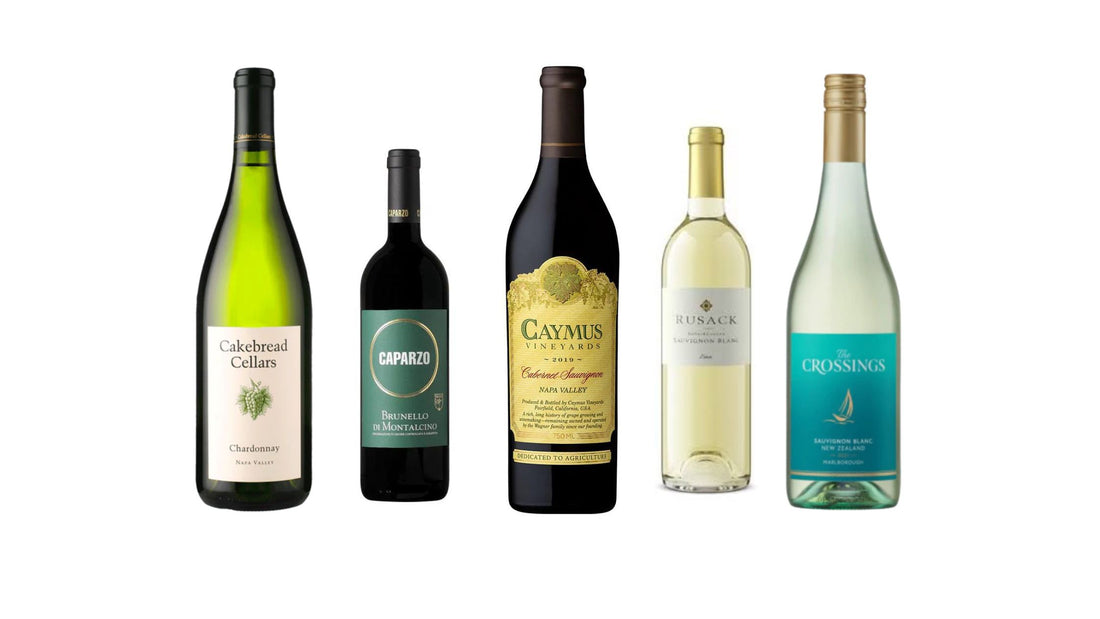Many Remedy Liquor customers ask us to teach them wine basics. Our unique atmosphere makes this investigation a fascinating ritual. We are pleased to provide this wine-tasting introduction to enlighten those interested in this fascinating beverage.
Wine is more than a hobby - it's an invitation to explore its scents, flavors, and history. Whether you're a wine novice or a connoisseur, understanding how to taste wine will enhance your appreciation for this classic drink.
The following will guide you through the basic steps of wine tasting, starting with distinguishing Pinot Noir and Sauvignon Blanc. We encourage you to raise your glass and discover the many mysteries in each bottle of wine as we go on an unrivaled sensory trip, underlining the subjective and personal character of wine tasting.
What Is Wine Tasting?
Wine tasting combines art and science to let people enjoy and evaluate wine based on sight, smell, and taste. This entails observing the wine's appearance, smell, taste, texture, and flavor. One's ability to recognize and appreciate the many factors that make each vintage unique grows with the wine-tasting experience.
Slowly examining, smelling, tasting, and thinking about the wine's aftertaste will help you grasp it. Thus, learning to taste wine provides you with the vocabulary and senses to understand its complexity and make every sip immersive.
The Five Fundamental Steps of Wine Tasting
Below are the five wine-tasting steps: see, swirl, scent, taste, and savor.
Sight
Color and clarity reveal a wine's age, grape variety, and potential flavor, making visual judgments vital. Another way to judge a wine is by its "legs" for thickness and alcohol. To maximize your wine tasting, hold the glass by its stem and examine the wine's color, clarity, and legs against a bright background.
These visual cues set the mood for tasting.
Swirl
Swirling wine releases aromatic chemicals and boosts fragrance. This simple activity can reveal the wine's body as well as its alcohol % and viscosity by creating legs down the glass.
Smell
By "nosing" or sniffing the wine, you can discover fruity, earthy, and other scents that enhance the flavor. Deeply inhaling the wine's aromas helps you appreciate its flavors.
Taste
Wine tasting involves more than sugar and acidity—it's about structure, body, and flavor. This approach allows for a complete wine character analysis from first impression to last.
Savor
The wine's harmony, depth, and finish should be considered. These variables make the wine's character and quality more apparent, improving the experience.
Navigating Food Pairings
Wine and food pairing can make an ordinary evening special. At Remedy Liquor, we believe that a perfect meal requires the right wine. This section covers food and wine pairing basics to help you cook.
- Complementary Pairings: This strategy involves matching food and wine flavors to highlight their similarities. A creamy sauce and buttery Chardonnay make a great pairing.
- Contrast Pairings: Contrast pairings create harmony by contrasting two items. Served with greasy fish, a crisp Sauvignon Blanc will cleanse your taste.
- Consider Intensity: Consider their weights and intensity to avoid one overpowering the other. A robust Cabernet Sauvignon pairs well with a big steak, whereas a light Pinot Grigio pairs well with salad or shellfish.
- Regional Pairings: Regional food and wines go together because of shared cooking methods and ingredients. Traditional Italian Sangiovese wine goes well with tomato-based pastas.
Try different mixtures until you find one you like.
Expanding Your Wine Knowledge
Educating yourself about wine tasting and food pairings can enrich your experience and respect for this ancient art form. We want Remedy Liquor to be a friendly place to experience wine in all its forms:
- Wine Education Classes: Wine education classes systematically overview winemaking areas, varietals, and procedures. In these lectures, you can ask wine experts anything.
- Wine Tasting Events: Wine tastings and festivals teach you about grape varietals and winemaking. These events are fantastic for expanding your wine knowledge or learning from professionals.
- Travel: Going to wine country is like entering another universe. You watch grapes grow, wine ferment, and terroir affect the end product. Learning about each location's history can enhance your wine expertise.
- Join a Wine Club: Wine club subscriptions send wine from several wineries. These wines, frequently with tasting notes and pairing suggestions, will expand your palate.
- Read and Research: Wine lovers can read books, journals, blogs, and podcasts. Reading about wine and its evolution is an excellent approach to learning more.
Participating in these events will allow you to enjoy wine tasting and food matching and join a community of wine lovers and academics. Remedy Liquor will teach you about wine and help you enjoy every drink.
Wine Tasting Terminology
Learn wine-tasting terms, including acidity, tannin, bouquet, finish, notes, oak, body, dryness, elegance, and terroir. They will help with wine discussions. These expressions help explain wine-tasting experiences and preferences.
- Acidity: Wine acidity is its freshness, tartness, and sharpness. It keeps everything in check and may make your mouth water. Wine with strong acidity is "bright" or "sharp."
- Tannin: Red wines contain primarily tannins, which give them structure and may feel silky or astringent. They come from grape skins, seeds, and stems or mature in wood.
- Bouquet: Fermented and matured wines' multi-layered scents beyond fruit notes give them character.
- Finish: After swallowing, a wine's finish indicates how long it lingers on the palate. High-quality wines have long, complex finishes.
- Notes: Wine "notes" include "hints of oak" and "notes of cherry."
- Oak: The aromas and flavors of oak-aged wine. These ingredients make wines more complex, adding coconut, smoke, clove, vanilla, or clove.
- Body: The wine body is its mouthfeel, which can be thin or thick. Concentration, sugar, and alcohol impact this.
- Dry: Dry wines have little sugar left after fermentation. The opposite of dryness is sweetness; a wine's flavor and food pairings depend on its dryness.
- Elegant: Elegant wines are delicate and well-balanced. Most people define elegance as nuance, not intensity.
- Terroir: The French name for the soil, temperature, and location that impacts wine flavor and aroma is terroir.
- Vintage: A wine's vintage can be affected by the year of harvest, weather, and climate fluctuations.
- Varietal: Varietal wines include Chardonnay, Merlot, and Cabernet Sauvignon.
- Complexity: A wine is complex if it has multiple aromas and flavors or layered flavors.
- Balance: A balanced wine contains the right fruitiness, acidity, tannins, and alcohol - the elements in a well-balanced wine complement one another without dominating.
- Minerality: A wine's terroir dictates its mineral overtones, which can taste like damp stone or metal.
Learn these phrases to improve your wine-tasting and sharing skills. These phrases will enhance your wine experience, whether you drink at home or at an event.
Embracing the Journey
Being open-minded and interested is key while tasting wine with your favorite body from Remedy Liquor. Do your research, drink lots of water, and avoid harsh foods that change your taste. For the best wine tasting, employ all your senses.
Write down your opinions and use colorful language to describe each wine. Remember that wine tasting is personal and dynamic. Each tasting should improve your taste and respect for the complex wine world.
No matter your wine knowledge, tasting new wines is fun. Start your wine-tasting adventure at Remedy Liquor with a few bottles of deliciousness.

